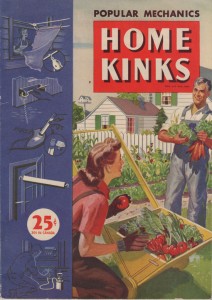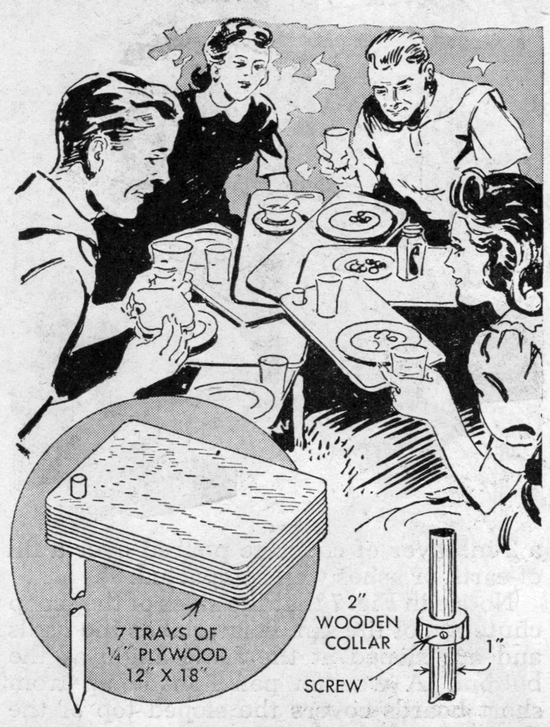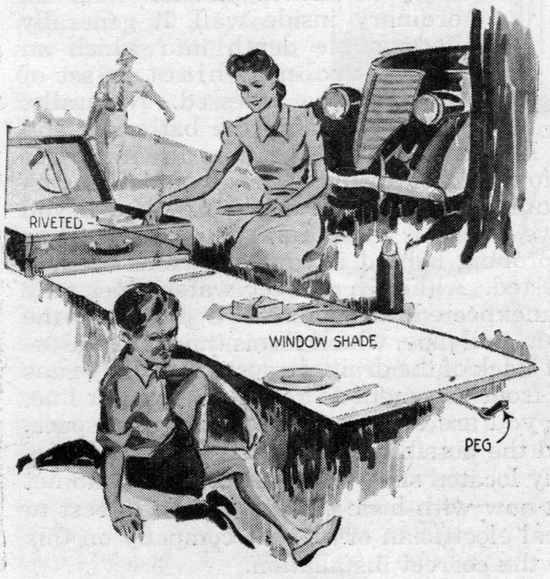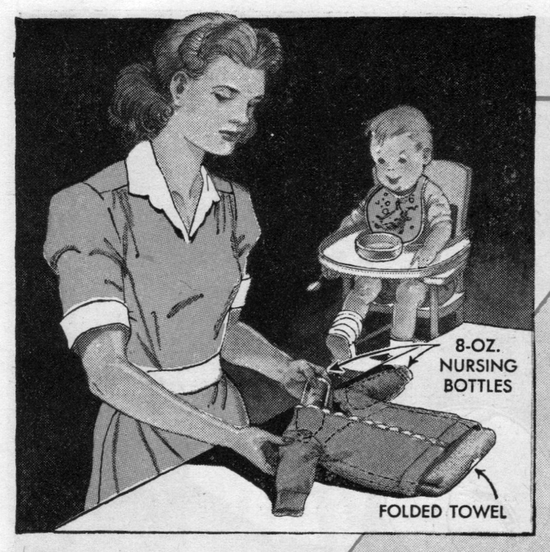The 21st century has seen the rise of the term “life hack“—any strategy or action (sometimes digital, sometimes mechanical) used to make someone’s life just a little bit easier.

Even though “lifehack” made its way into the dictionary just last year (along with other words like unfollow and NSFW) making your life easier through simple tricks and workarounds is far from a new idea. In the 1940s and ’50s Popular Mechanics magazine annually released a booklet called Home Kinks which showed homeowners small kinds of “why didn’t I think of that?” improvements for their lives. The 1946 version of the booklet included tips for everything from how to keep a baby’s sweater in shape to building a novel picnic table out of a stake and some plywood trays. Some of the “home kinks” were submitted by the magazine’s readers.
Many of the “home kinks” were ways to make the postwar home safer for children. The 1946 booklet included tips on how to make things like a dummy plug for wall outlets so that Junior doesn’t shove fingers or objects into the sockets and get electrocuted. There was even an explainer for how to put wire mesh guards around an electric fan so that the little ones don’t stick their fingers into that, either.
A few of the “home kinks” or “life hacks” from the 1946 annual appear below.
Cascading plywood picnic table (1946)

Plywood Trays Pivoted on Stake To Form Picnic Table
Picnickers can gather around this compact tray assembly, spread the leaves and thus provide a handy table. The entire unit can be taken apart in a moment and stacked in a small space in the car when lunch is over. The leg is a hardwood stake about 3 ft. long, which is driven into the ground. A wooden collar supports the trays as they are slipped over the stake.
Brush wiper made from an extra pain can lid (1946)

Brush Wiper on Paint Can Made From Extra Lid
Instead of wiping surplus paint from a brush on the rim of the can or on a wire across the top of the can as is often done, use this handy wiper made from an extra paint-can lid. It is switched easily from can to can and is made by cutting out a portion of the extra lid as indicated, folding under the projecting lip so that paint will drain back into the can. — E. J. Simanek, Cicero, Ill.
Paper collar for a medicine bottle to remind you when to take your medicine (1946)

Numbered Paper Collar on Bottle Shows Time to Take Medicine
Anyone who experiences trouble in remembering the time to take medicine, can use a paper collar as shown to indicate the time. Number the collar from 1 to 12 and paint a small arrow on the neck of the bottle as indicated. Then each time medicine is taken, turn the collar so that the arrow points to the hour it is to be taken again.
Tying up a lamp cord so that “creeping” babies don’t pull down the lamp (1946)

A creeping baby is less likely to pull a lamp off a table if the cord is tied to one of the table legs.
Keeping a cookbook from being soiled by your hands (1946)

Applying a coat of clear shellac about 1 in. wide at the marginal edges of your cookbook pages will help to keep them from being soiled when turning the pages while your fingers are covered with grease or pastry.
Shoehorn helps keep a mop upright when it’s in a pail (1946)

Shoehorn Taped to Mop Handle Keeps It Vertical in Pail
Taped to the handle of a scrubbing mop, a shoehorn will slip over the edge of the scrub pail and keep the handle in a vertical position when the mop is not being used. Location of the horn will depend on the height of the pail. If the horn is bent to the contour of the mop handle, it will be easy to tape in place.
Window shade/suitcase insta-picnic (1946)

Roll-Up Table Cloth for Picnic From Shade on Suitcase
If you go on picnics frequently, an old suitcase with a window shade attached to it will be handy. The suitcase provides a carrier for food and other articles, and the shade serves as a table cloth when pulled out on the ground and fastened down with a peg as shown. The shade roller is attached to the suitcase by means of the regular brackets, which are riveted in place.
Mailing tube as an extension cord reel (1946)

A piece of ordinary mailing tube notched as shown makes a convenient and safe reel for an extension cord and bulb.
How to make sure a baby’s sweater keeps its shape (1946)

Baby sweaters keep their shape after washing if nursing bottles and a folded towel are inserted as shown.
Raised and supported garbage can (1946)

Supported on three pipes set in cement, a garbage can will not be upset by dogs, and it is kept from rusting by contact with the damp earth. Fittings anchor the buried ends and hold the can about 6 in. above the ground.





